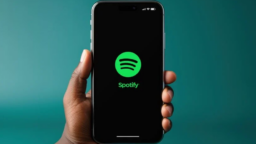Artists and their managers have long appreciated the royalties they receive from Apple Music – which, on a per-play basis, are reportedly close to double what they get from Spotify.
Yet Spotify has always won far more praise when it comes to another valuable asset for musicians: data.
Spotify launched its Spotify For Artists app in 2017 (an evolution of the ‘Fan Insights’ tool it introduced two years earlier) to provide artists and their teams with information pertaining to their popularity on the service.
Now, Apple is stepping up to the plate.
Today (August 8), Apple Music For Artists (AMFA) is emerging out of Beta and is being made available for every artist on Apple Music. Like Spotify for Artists, the service is available as both a desktop interface and a standalone mobile app (in AMFA’s case, currently only on iOS).
MBW understands that, in the limited industry meetings Apple has had during AMFA’s Beta, it has been confidently telling artists that its app is “the best available” in the market.
We’ve taken a look at the platform, both on desktop and via the iOS app. As you’d expect, it allows artists to monitor the volume of their streaming plays on Apple Music and album/song sales on iTunes, all within a data set that updates daily.
Artists can also drill down into how specific songs and/or albums are performing (and how their fans are growing) in specific markets around the world – down to a city-level in over 100 countries. Apple believes this will help artists to plan tours, tailor setlists for fans in each city, and uncover hitherto unknown pockets of popularity around the world.

Artists can also monitor how many plays of a particular song in a given period have been generated by playlists, as opposed to ‘organic’ plays from fans – and what position their track has been placed within these lists. And they can also see how many of their streams are the result of algorithmic radio (i.e. ‘lean-back’) versus active plays.
This won’t shock you, but it’s a big differentiator: Apple is putting Shazam data front and center within its AMFA app, allowing artists to examine where their music has been most Shazam’d in particular locations and in particular time periods. (Apple fully acquired Shazam for a reported $400m in September last year.)
In addition, artists can see a basic count of the average number of daily listeners to their music, broken down by country, city or song, while there is a dedicated section breaking out their video plays on Apple Music.
Plus, Apple has updated its data to cover music industry standard release weeks to enable artists to better monitor week-to-week success.
And in a feature which reminded us of the much-vaunted artist app from AWAL, acts are automatically alerted when there are meaningful changes to their data, for example: (i) The first week plays of a new release versus their previous week-one plays; (ii) Milestones like ‘1 Million Plays’; (iii) Sudden spikes in streams anywhere around the world; (iv) When they are added to a major Apple Music playlist.
Unlike some third-party distribution/services companies, Apple does not provide insights on how an act’s streams translate into royalty payouts.Music Business Worldwide




